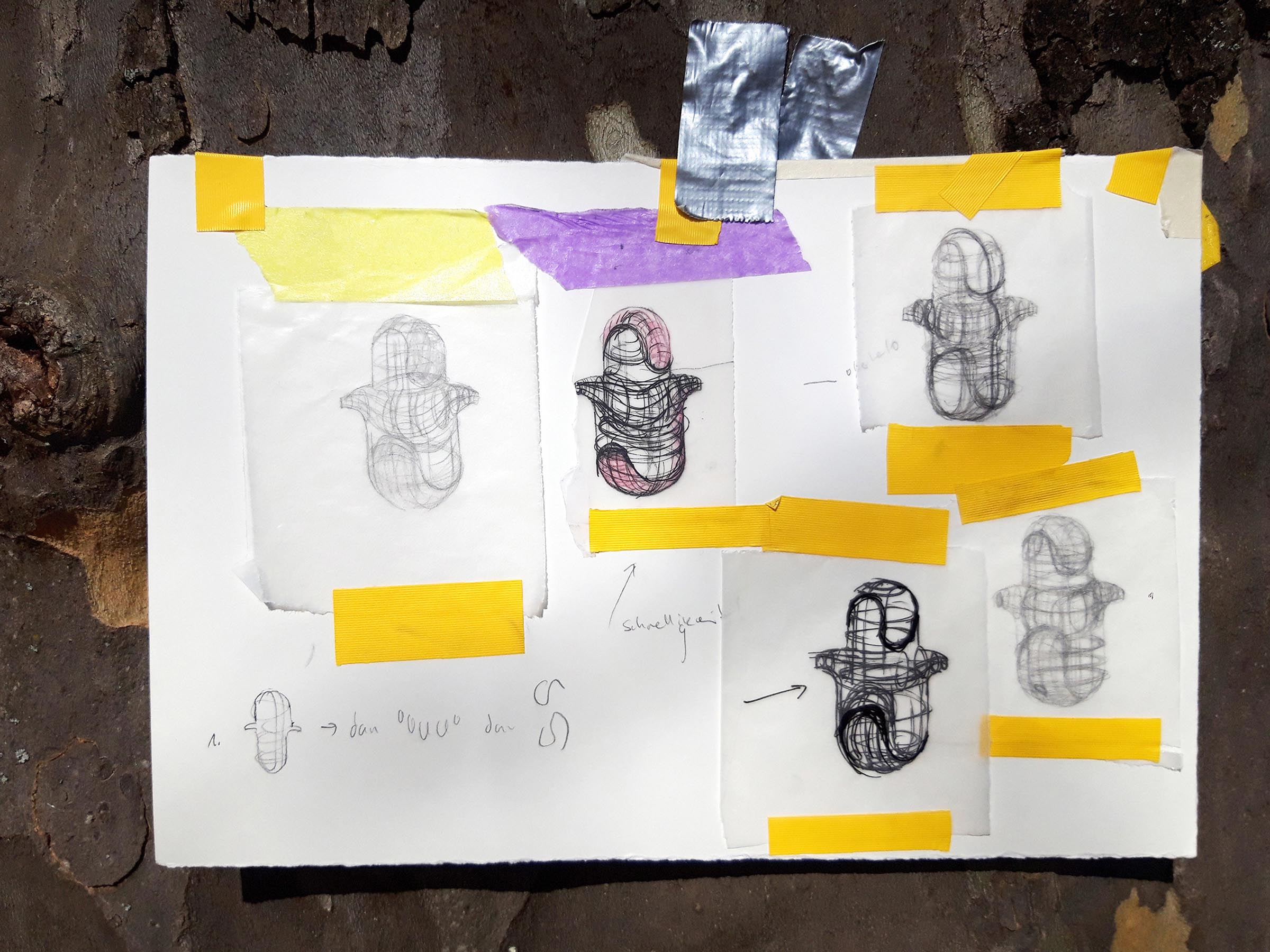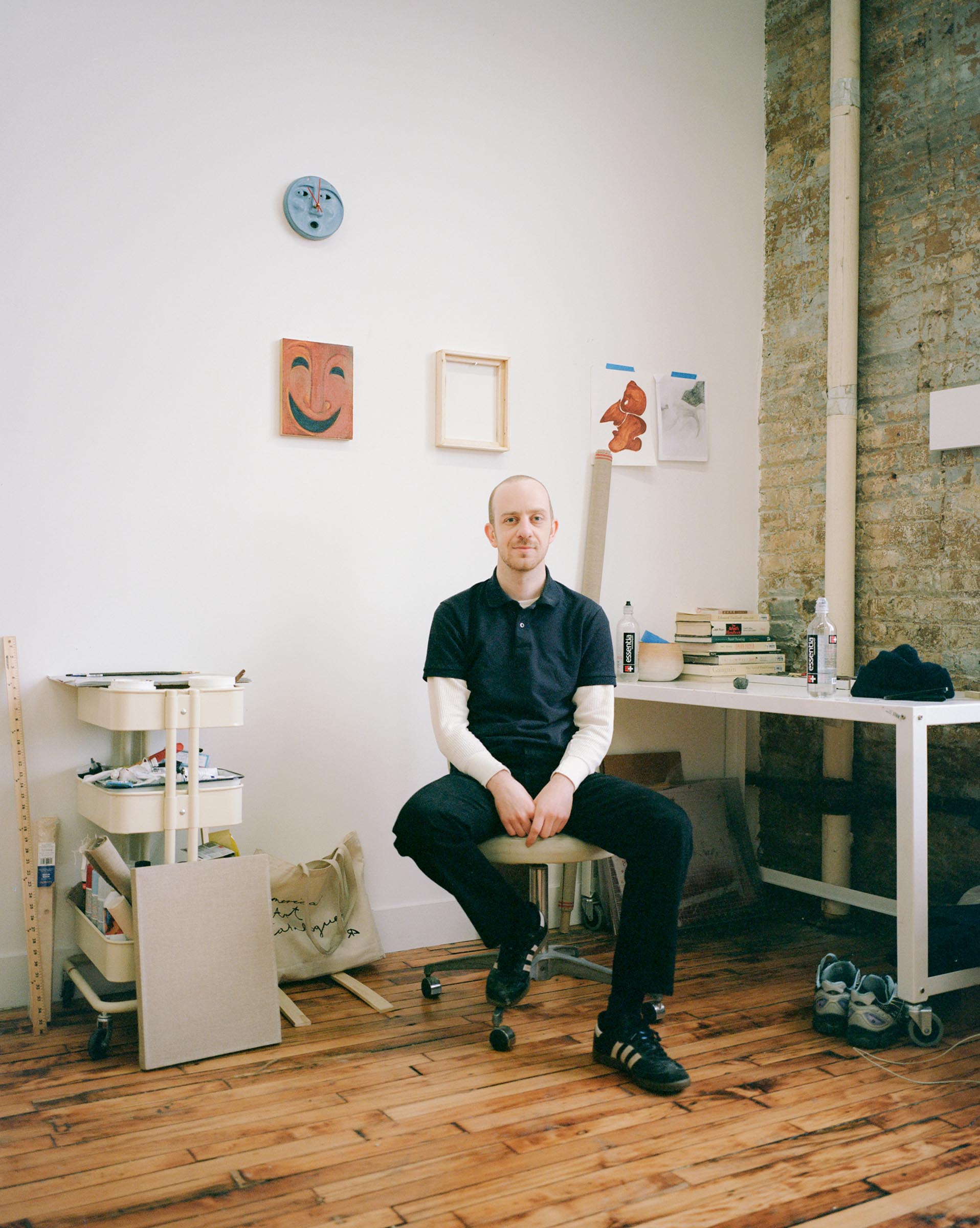How did you get into making art?
Drawing functions as a major part of my practice which lead me to study Scientific Illustration at Zurich University of the Arts, CH. Two years into my Bachelor, I decided to gain a new perspective by initiating an exchange to pursue my Bachelor’s Degree in Illustration at Hamburg University of Applied Sciences, DE. Afterwards, I moved to London where I concluded my Master in Print at the Royal College of Art London, UK in 2017.
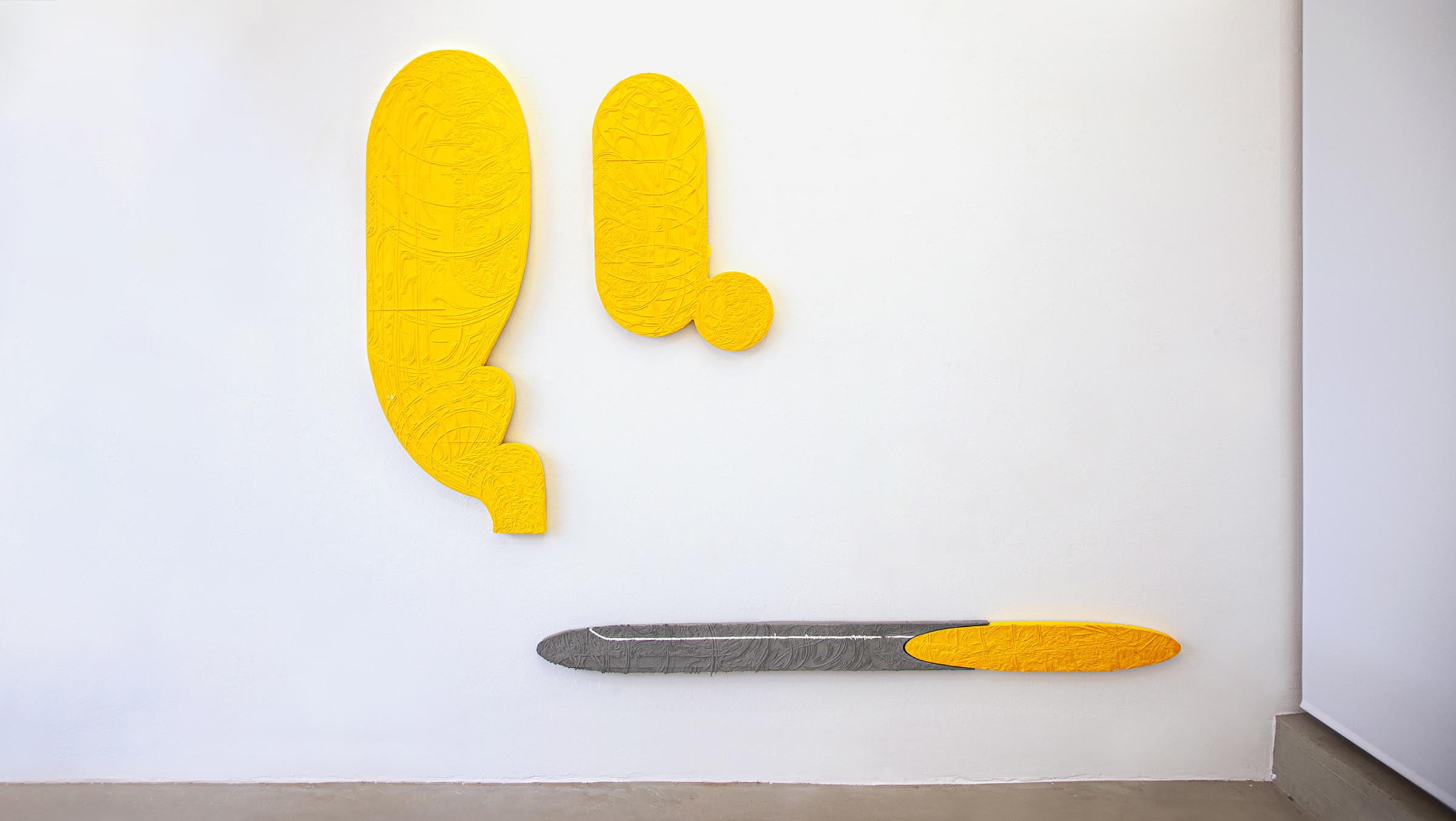
photo courtesy Jana Buch @janabuch_
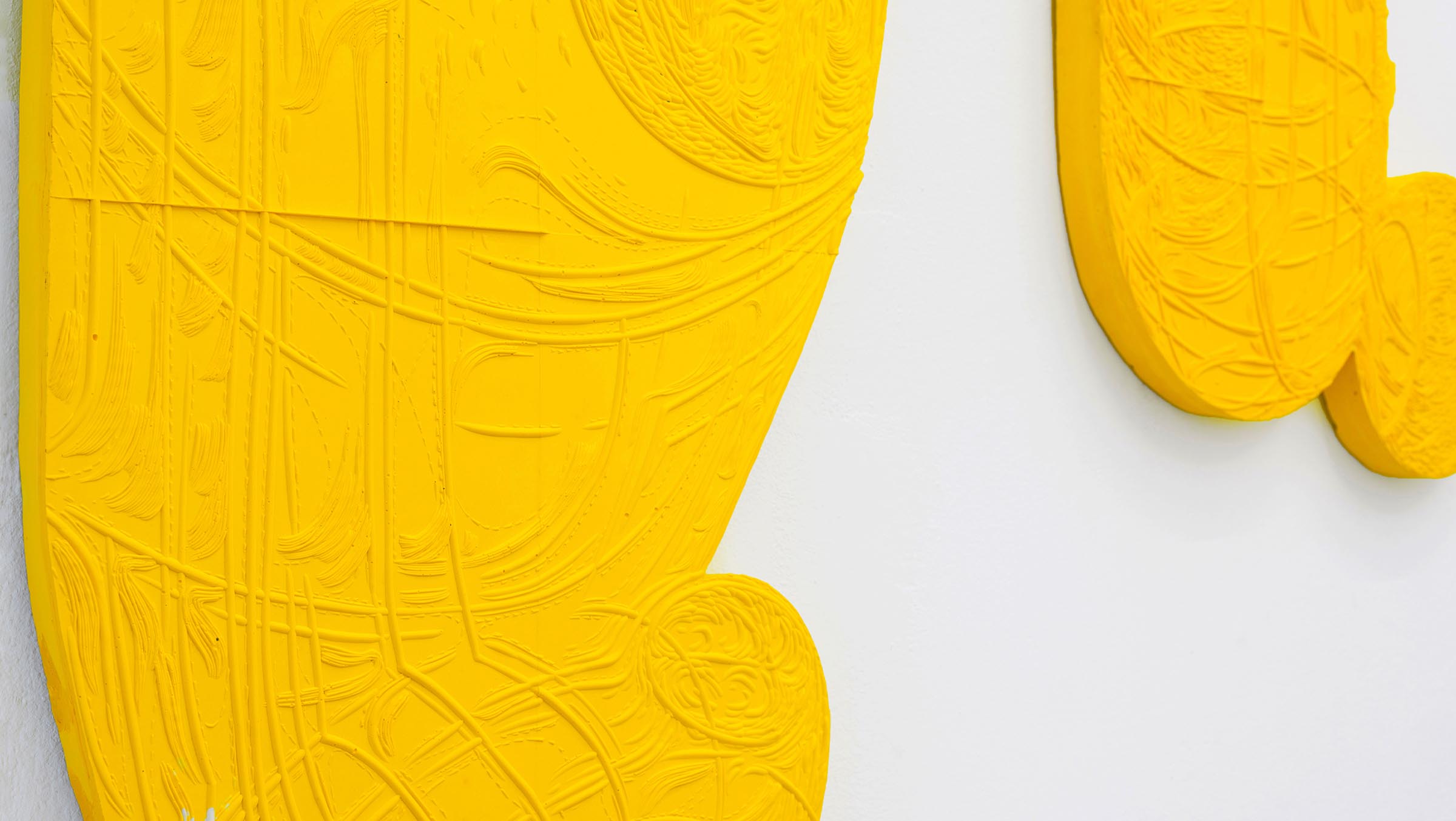
photo by Jana Buch @janabuch_
What are you currently working on?
With my project SILOS I concentrate on the verbalization of our recollections. I want to investigate, whether the phenomenon of memory escapes language altogether and whether one can talk about memories without employing the concept of forms and colors. I want to utilize this topic of transformation as my method. I am deeply interested in the in-betweens, where one condition changes into another, thought is converted into sound, and memory transitions from image to object and vice versa.
I conducted interviews, where the interview partners only described the visual aspects of their memories, such as the shapes and colors they saw. These served as the basis for my own creation of shapes. By creating a visual code illustrating memories, I am building a visual representation of a language area. My assumption is that language affects not only identity but also memory.
SILOS is my ongoing project, which already consist of multiple works mainly realized during my three-month residency at Riddergade AIR at Viborg Kunsthal in Denmark. Some of the works are shown in the solo show SILOS at Baustelle Schaustelle, Essen, photographed by Jana Buch, as well as in the group shows ‘Into Distance ’at Kunsthaus Essen and in the group show ‘Annihilation’ at Ohsh Projects Central in London.
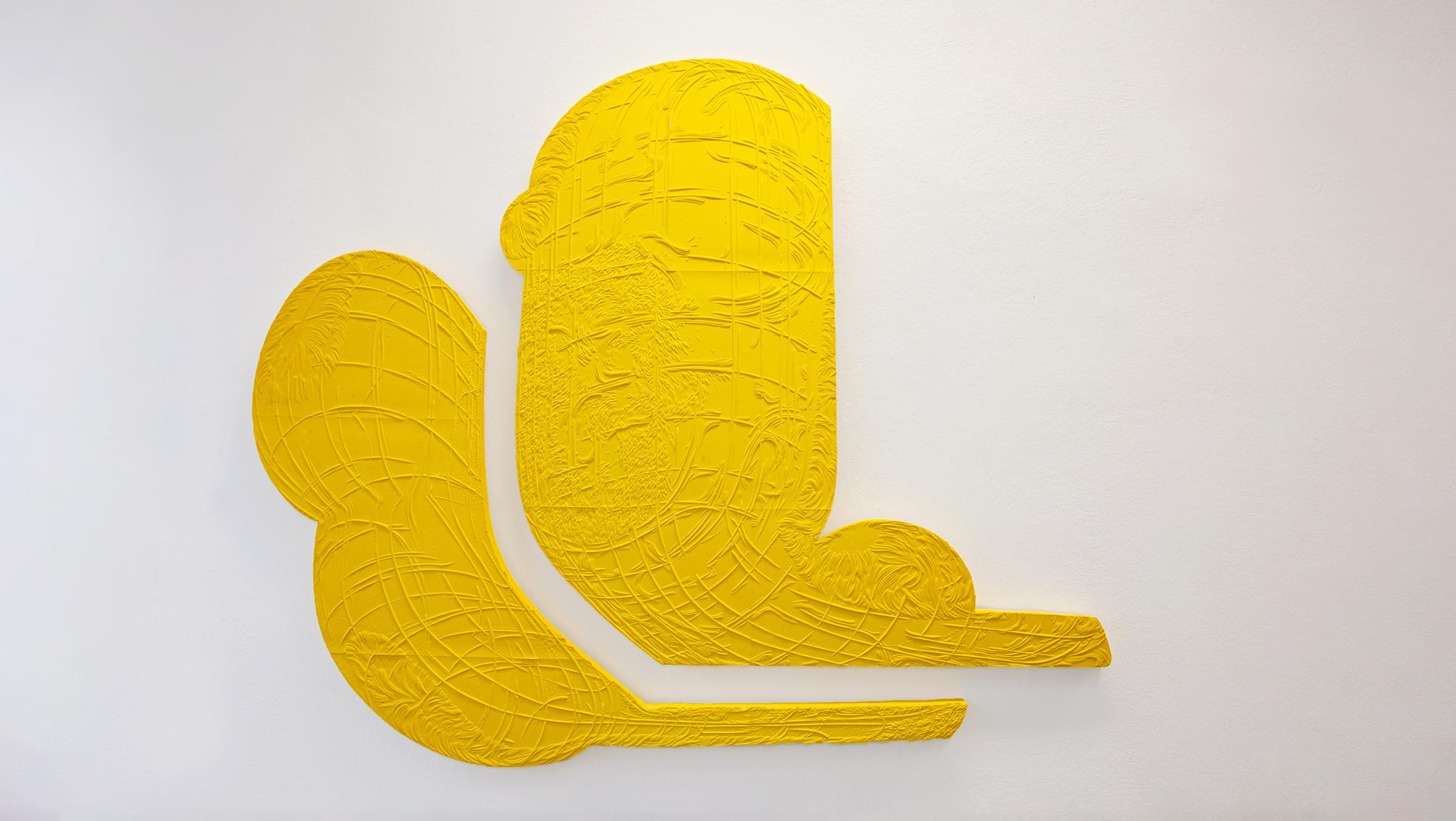
photo by Jana Buch @janabuch_
I want to investigate whether memory transcends language entirely and if it can be discussed without utilizing the notions of forms and colours.
Bianca Barandun
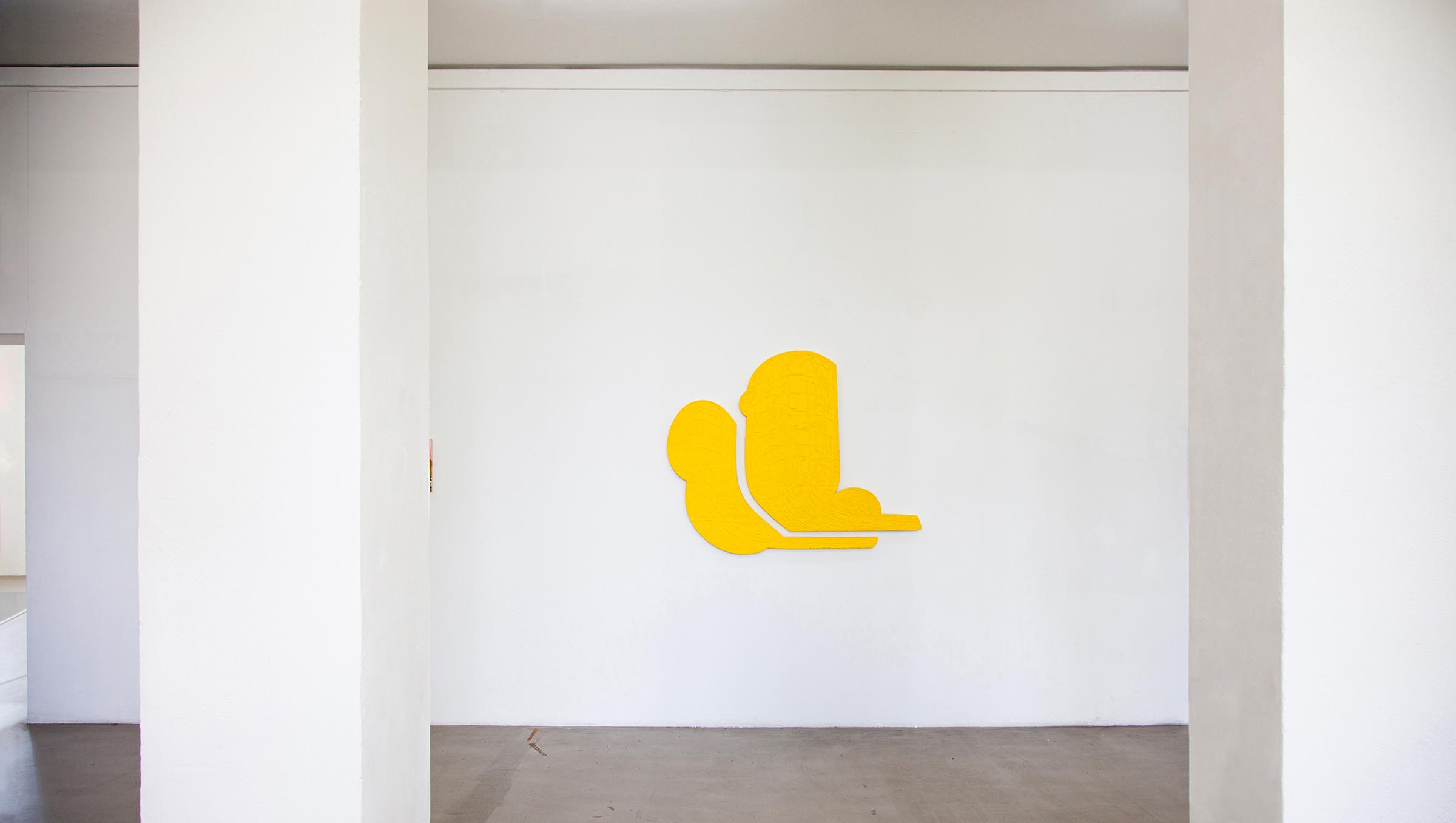
photo by Jana Buch @janabuch_
What inspired you to get started on this body of work?
Language is a constantly evolving, complex system of sounds and symbolic signs with the aim to communicate, where meaning is assigned to every sign or signal, yet wholly arbitrarily. In the process of understanding and transmitting thoughts, language serves as a mediator between speaker and listener. Consequentially, understanding is a key element of this process. However, the allocation of meaning to the received language causes the ambiguous nature of communication. Language resembles a code, to be deciphered by a recipient or interlocutor, that conversational partners must agree on.
I want to investigate, whether memory transcends language entirely and if it can be discussed without utilizing the notions of forms and colours.
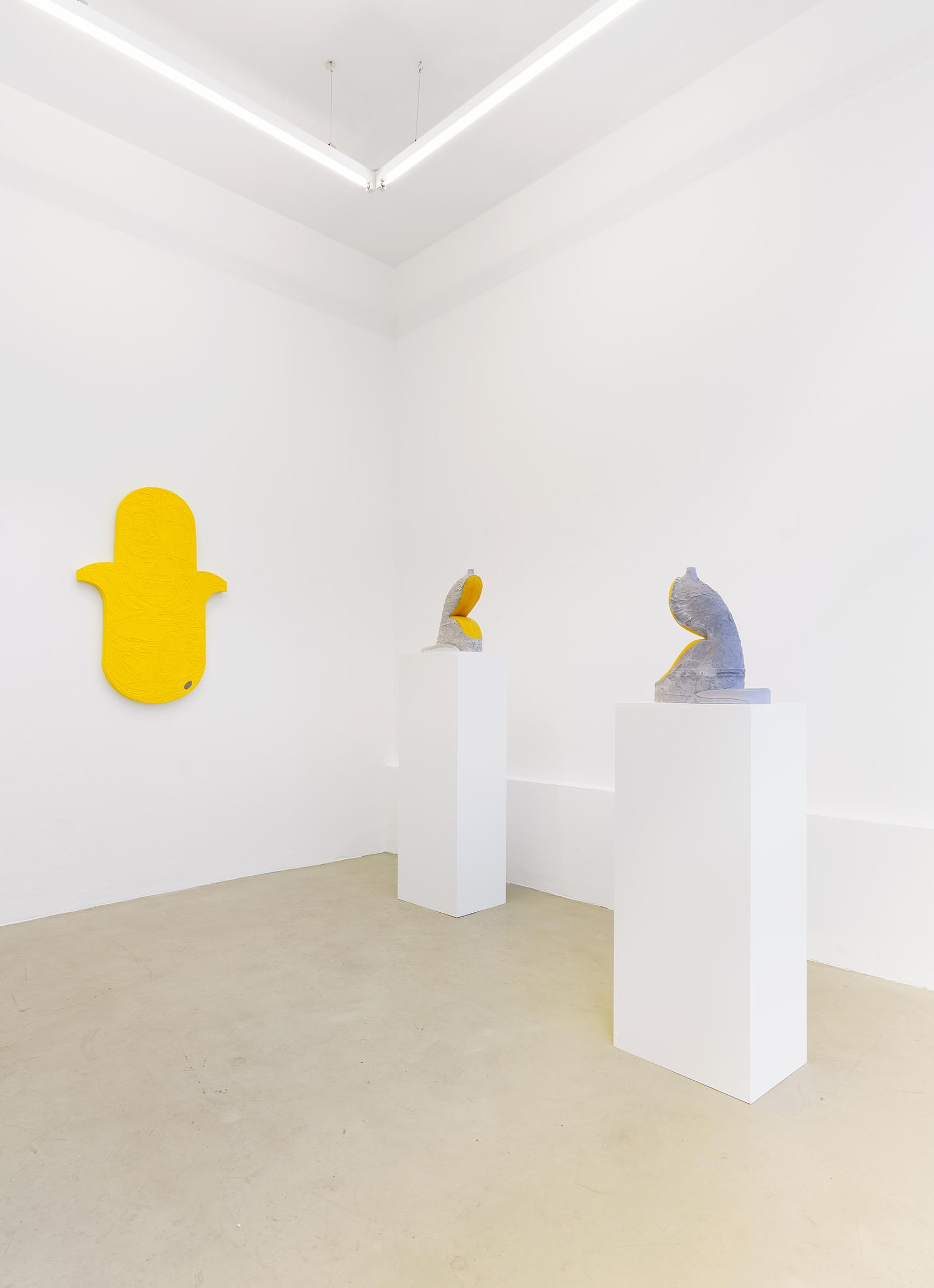
photo by Jana Buch @janabuch_
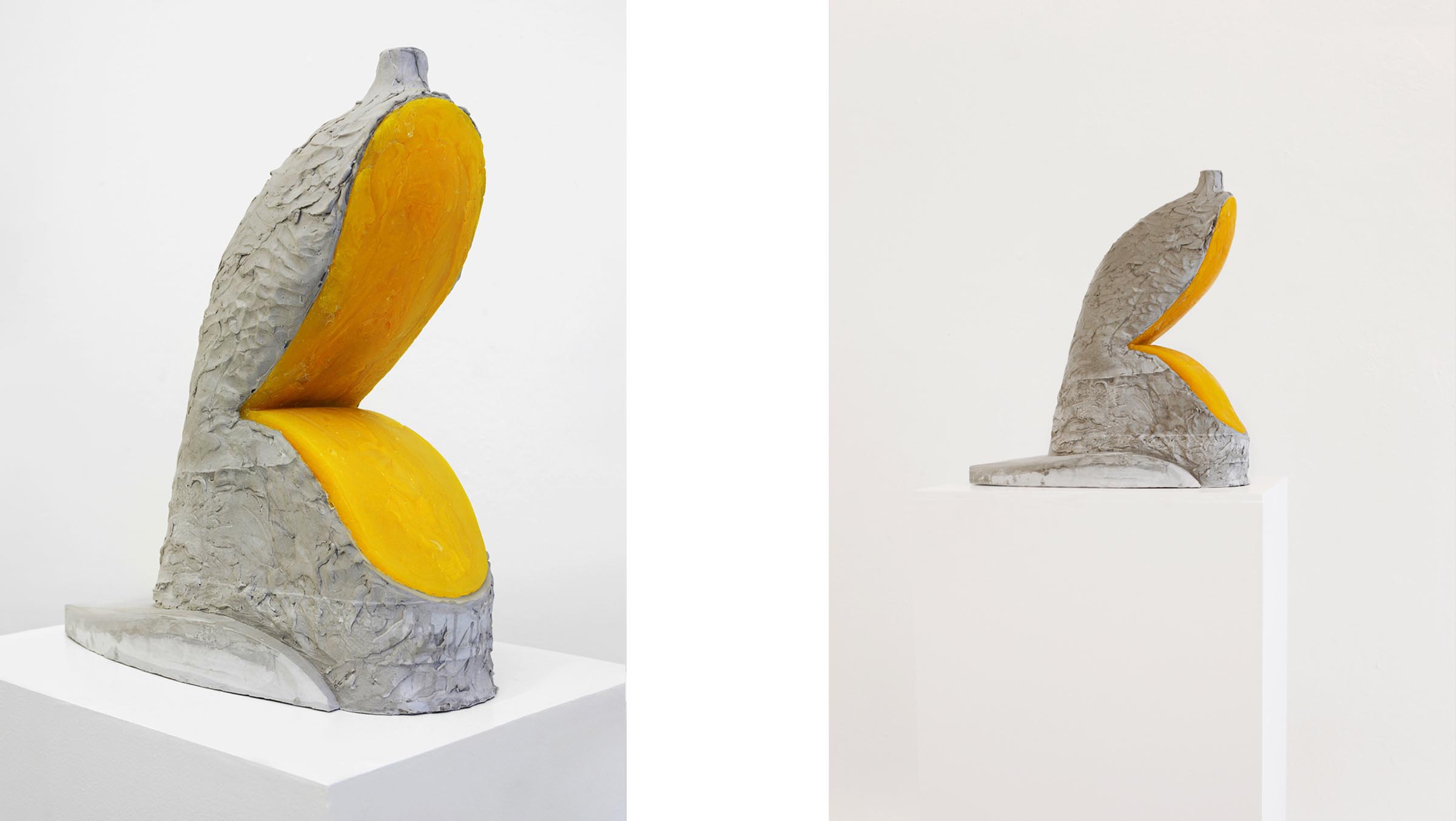
photo by Jana Buch @janabuch_
Do you work on distinct projects or do you take a broader approach to your practice?
Working at the intersection of print, drawing and sculpture, I construct work within loose projects by combining and alternating methods to perceive what happens when materials are used unconventionally. My goal is to establish a visual language with both rhythm and flow, that includes the imperfections and the unexpected as part of a growing vocabulary. I assemble shapes drawn from architecture, everyday objects and memory. Shifting from organic to geometric appearances, they are in flux and generate multiple associations, while playing with anthropomorphic attributions.
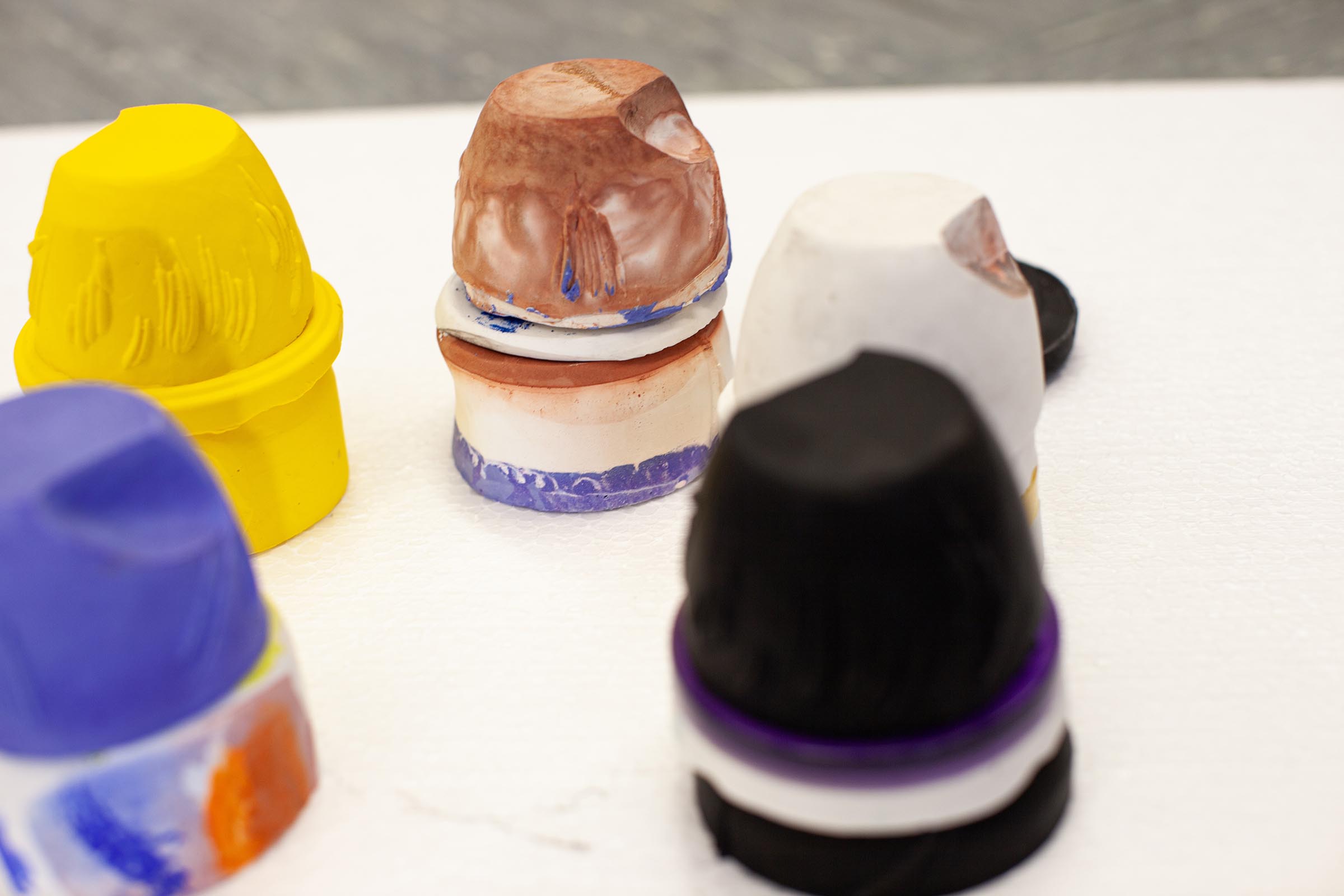
What’s a typical day like in your studio?
The appearance of my studio shifts quite rapidly according to the stages of my working processes. I spend a substantial part of my studio time with researching, writing, reading, sketching and testing out new materials. After that first stage, I need to get an overview and see all my ideas, tests and sketches in one place, which means that I am either taping all the pieces of paper with the sketches on the wall or I lay them out on the floor, which I do likewise with the material tests. Then I start to select and mark the sketches that I will take to realization.
When I move into production mode, the appearance of my studio shifts again. I will lay out all the materials and tools in a certain way, so when I start working it allows me to bounce from one work to another quite quickly. This is particularly important since the material I usually work with has a rapid curing time of only several minutes.
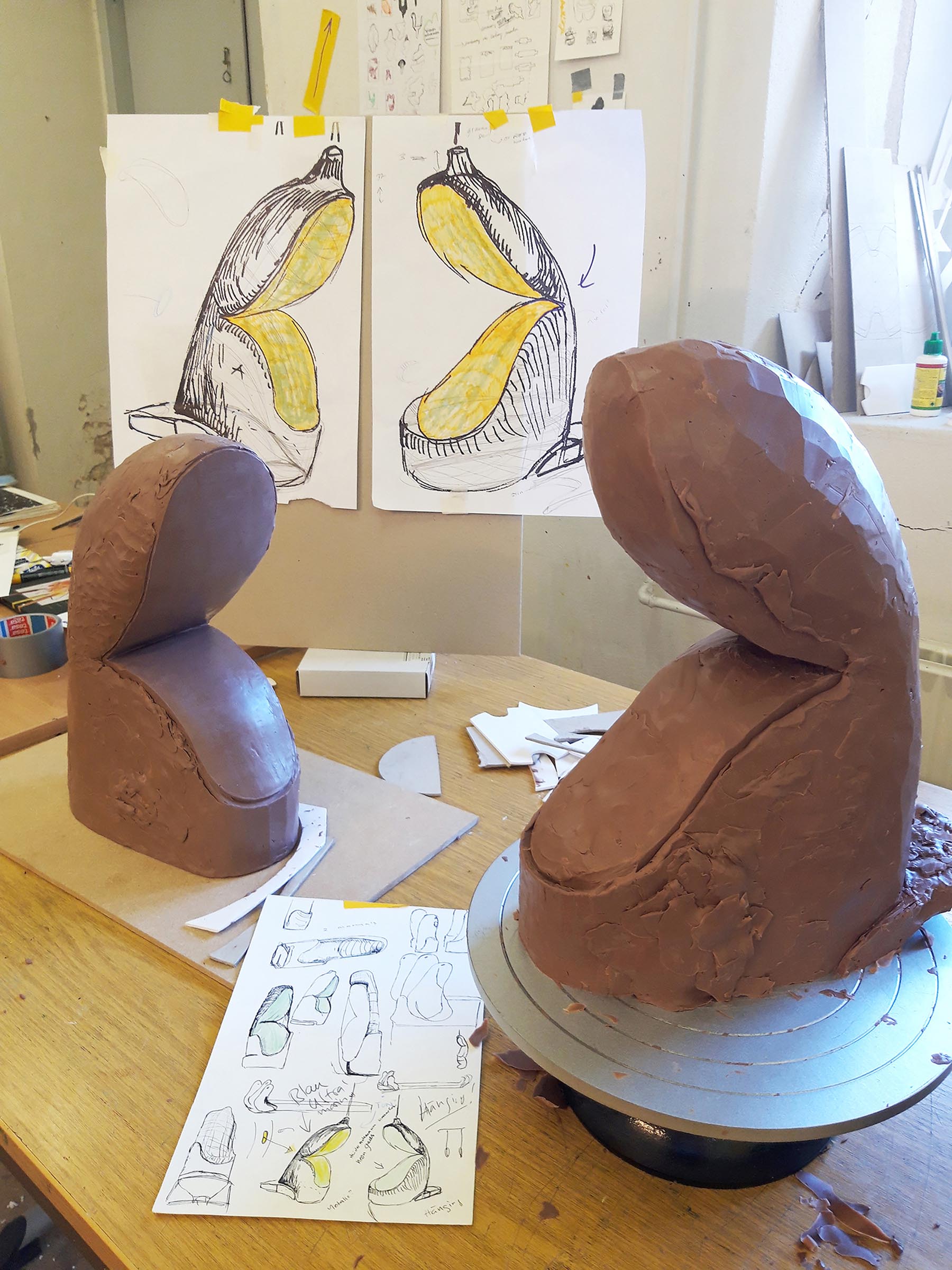
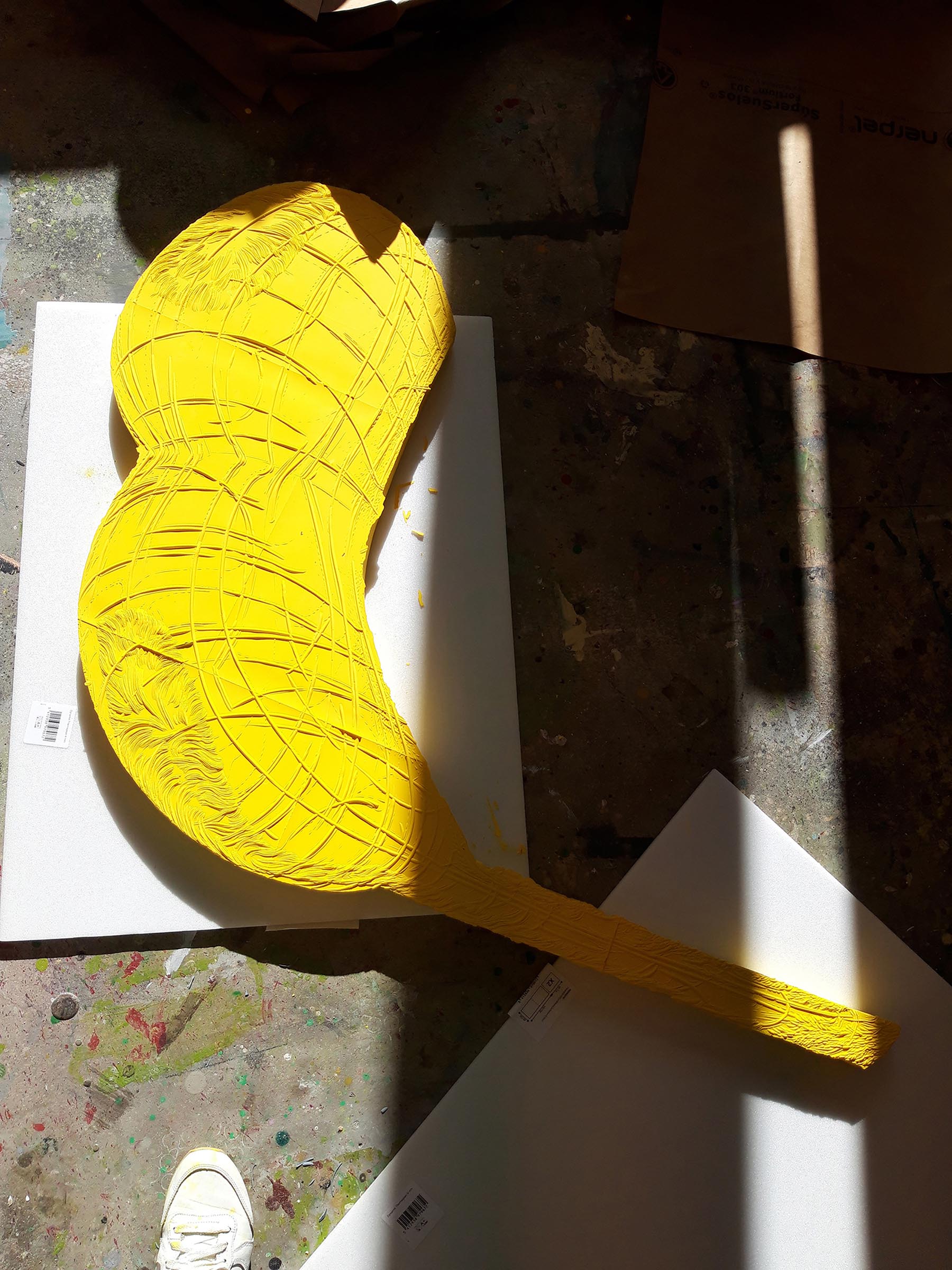
Who are your favorite artists?
I am really fond of Ida Nissen’s work, in particular how she generates her color pallets and uses them to create her sensitive collages. Ida Eckblat and Isa Genzken have also been on my list for quite a while.
Where do you go to discover new artists?
Mainly, I discover new artists by going to exhibitions, through my own research, art magazines or sometimes through conversations with friends. Occasionally, I also discover new artists by coincidence, for example when travelling.

photo by Jana Buch @janabuch_
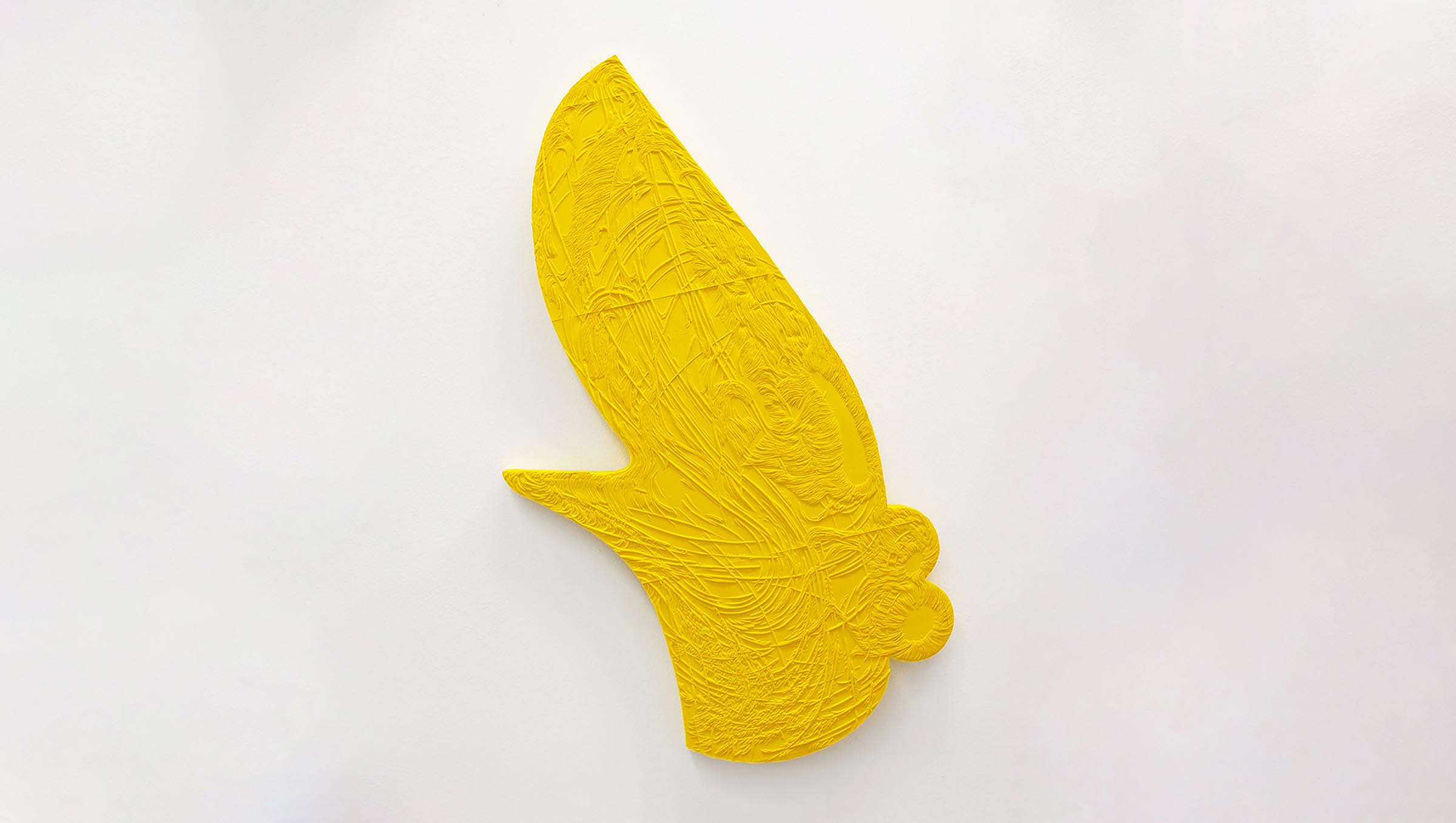
photo by Jana Buch @janabuch_
Learn more about the artist by visiting the following links:










